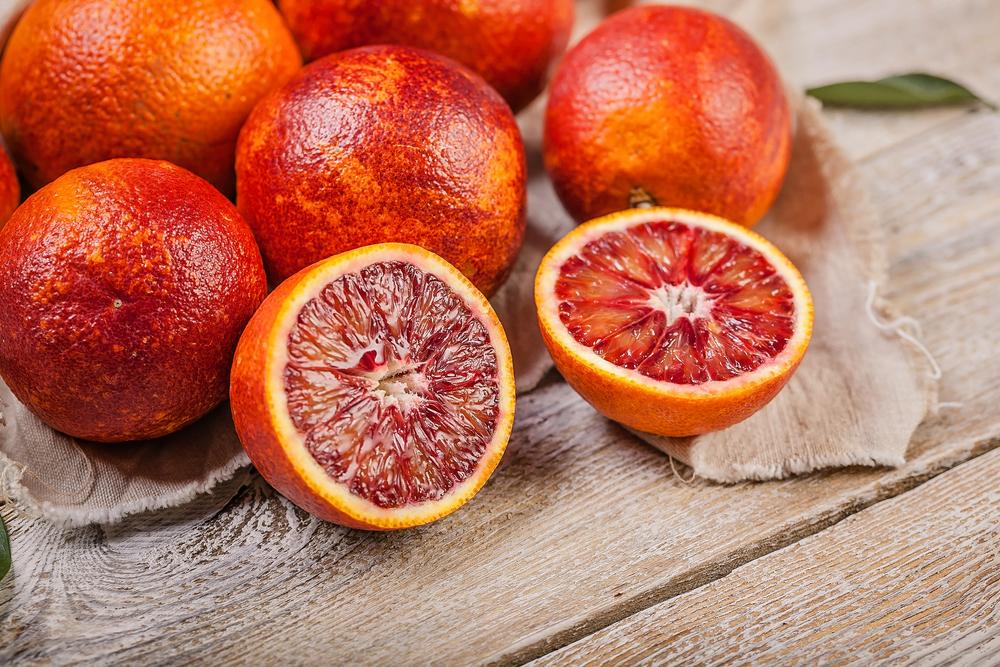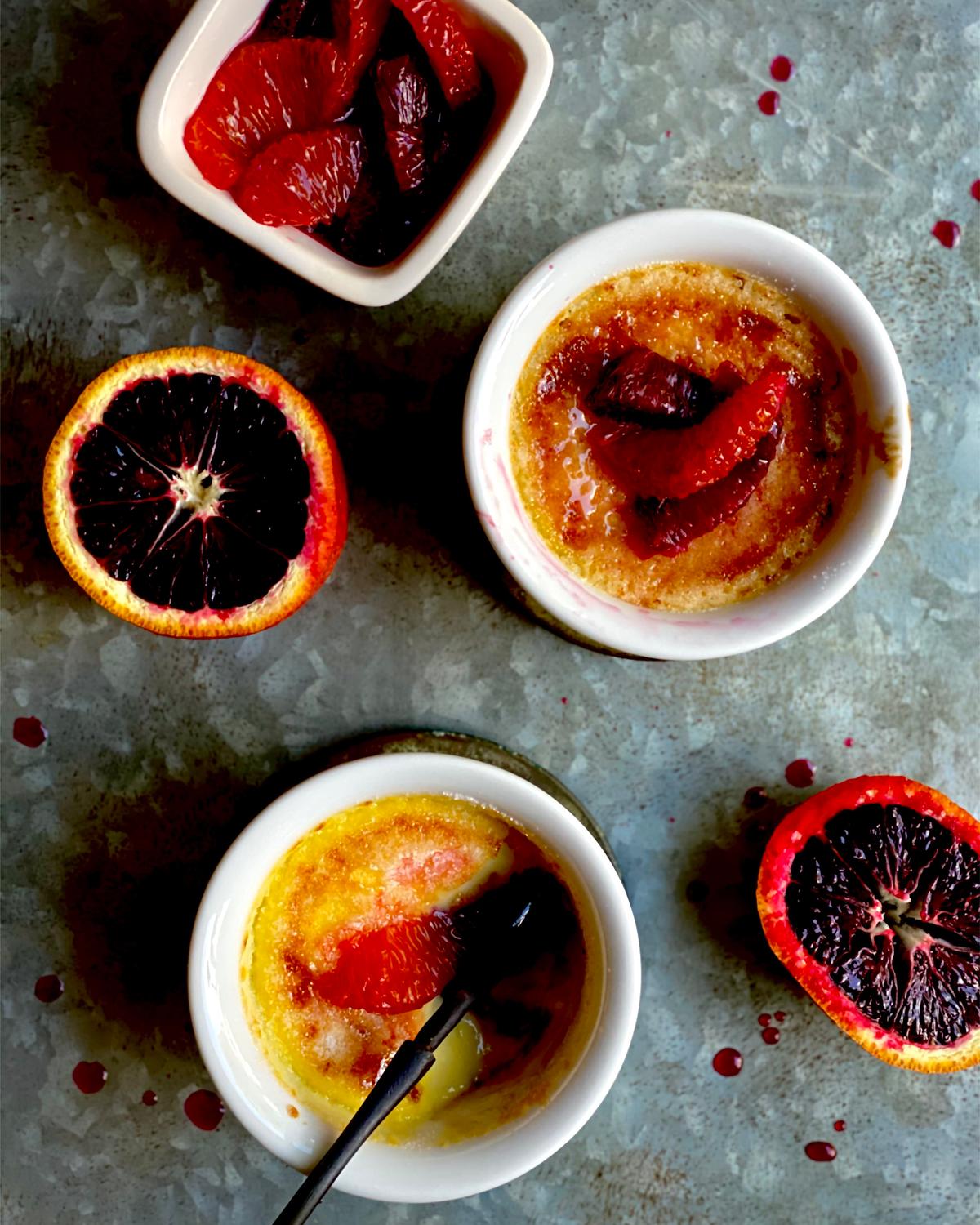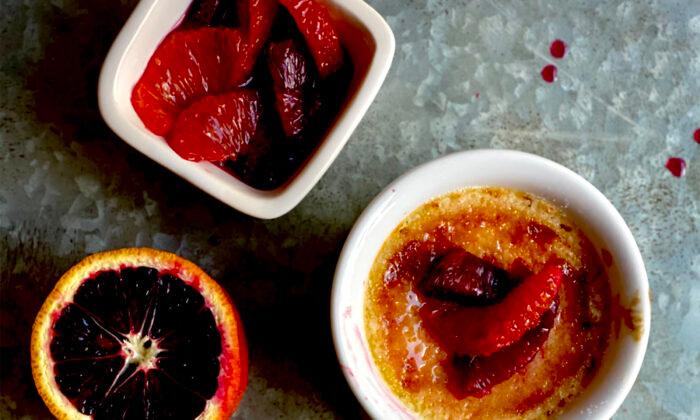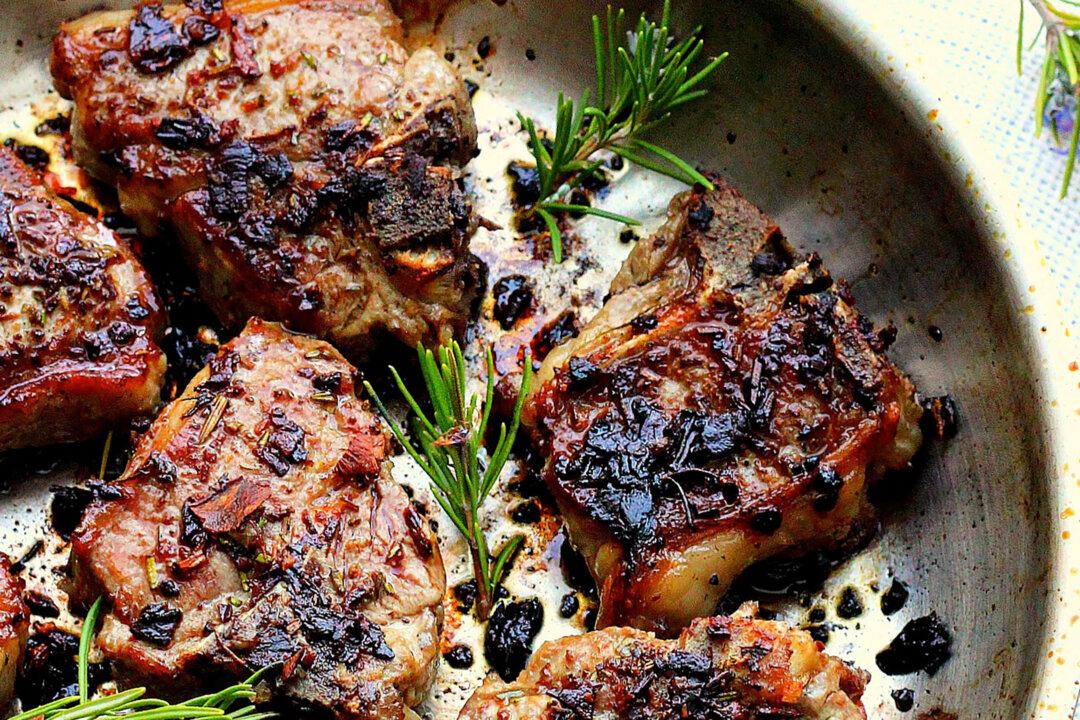It’s citrus season, and there’s no better way to embrace it than with blood oranges.
Despite their graphic name, blood oranges are sweet, delectable, and unique. They are smaller than standard oranges, with mottled orange and rose-hued rinds. When peeled, their interior reveals segments streaked in brilliant crimson, ruby, and port wine colors—hence their name.
Blood oranges are packed with vitamins C and A and contain a compound called anthocyanin, which is a powerful antioxidant that makes their flesh their signature color (it’s the same compound that turns blueberries and blackberries blue and purple, and cranberries and cabbage red). The flavor of the orange is seductively murky, wine-like, and understatedly sweet, with less brightness and acidity than navel oranges.

The unique flavor of blood oranges lends well to desserts, syrups, cocktails, and sauces. In this recipe, it provides a wonderful contrast to the creamy sweetness of créme brûlée. A layer of blood orange curd, punctuated with a pop of sea salt, provides the base to the custard, as well as a fresh—and colorful—surprise when dipped into with a spoon. A Cointreau-blood orange supreme finishes the custard as an optional garnish (supreme is a French method to segment citrus fruit by neatly removing the pith and membranes).
Yes, the holiday season is behind us, but that should not deter us from making an impressive dessert. This recipe takes some time to prepare, but each component can be made in advance of serving. Consider it a fun weekend project. The results will brighten any winter doldrums and provide a perfect excuse to invite a few friends over for a cozy and convivial gathering.

Blood Orange Créme Brûlée
Active Time: 45 minutes Total Time: 1 hour and 20 minutes, plus cooling timeMakes 6 servings
- 4 large egg yolks
- 2/3 cup sugar
- 1/2 cup strained fresh blood orange juice
- 1/4 cup unsalted butter, softened
- 1/8 teaspoon sea salt
- 6 large egg yolks
- 2/3 cup granulated sugar
- 1/2 teaspoon vanilla extract
- 2 cups heavy cream
- 3 tablespoons granulated sugar
- 3 tablespoons light brown sugar
- Pinch of sea salt
Pour the curd into a glass container. Line the top of the curd with plastic wrap to prevent a skin from forming and cool to room temperature. The curd will continue to thicken as it cools (the curd can be prepared up to 3 days before using).
Spoon a layer of chilled curd into the ramekins, about 1/4 inch deep.
Whisk the egg yolks, sugar, and vanilla until light and fluffy.
Heat the cream in a large saucepan over medium heat until it just begins to boil. Remove from the heat and add the cream to the egg mixture in a steady stream, whisking gently to blend. Pour the custard back into the saucepan and cook over medium-low heat, stirring constantly with a wooden spoon, until the custard thickens slightly and coats the back of the spoon, about 5 minutes.
Ladle the custard into the ramekins. Pour boiling water into the baking dish halfway up the ramekins to make a water bath (bain-marie).
Transfer the baking dish to the oven and bake until the custards are just set but still a bit jiggly, 35 to 40 minutes (if the tops begin to brown before set, loosely cover the baking dish with parchment paper or aluminum foil).
Transfer the baking dish to a wire rack and cool the custards in the water for 15 minutes. Remove the ramekins from the pan and cool completely on the rack. Cover with plastic wrap and refrigerate for at least 6 hours or overnight.
Blood Orange Supreme
- 2 blood oranges, segmented
- 2 teaspoons Cointreau or orange-flavored liqueur
- 1 teaspoon sugar




